 There have been many different ways of playing video games on a console (and sometimes PC) over the years. Some have been better than others.
There have been many different ways of playing video games on a console (and sometimes PC) over the years. Some have been better than others.
How do you figure that out? For starters, I think you need to distance them from the console they were part of. The PlayStation's original controller was not as sexy as the console's marketing. And just because the NES is many people's starting point with a lifetime of Nintendo fandom doesn't mean its controller was as well-designed as Mario's jump.
In assessing these controllers on their own merits, then, I've taken a number of things into account. Comfort and durability are top of the list, but I've also examined how innovative they were. Not in gimmicky terms---the Wii's motion controls seemed pioneering at the time, but how did that shake out?---but in more substantial ways, like overall design patterns that would be copied for generations of consoles to come.
I've also weighed those innovations against the rest of the controller's qualities. The N64, for example, will forever be remembered for its introduction of a proper thumbstick, but there's little else about that pad's design that made a lasting impression.
Finally, I've considered the controller's place in time. No pad from the 80s or 90s is going to compare with a DualShock 4 or Xbox controller in terms of comfort or features, nor be suitable for the games we're playing today, but that's not the point: the point will be how well did a controller reflect the games and needs of a player at the time?
Basically, I think the best controllers are the ones that did a little bit of everything I just mentioned, and did them all very well. Able to innovate, endure years of punishment, be comfortable for the player and do everything the player needed to do in the console's prime.
Here, then, are the best of them (note that they're not ranked in order):
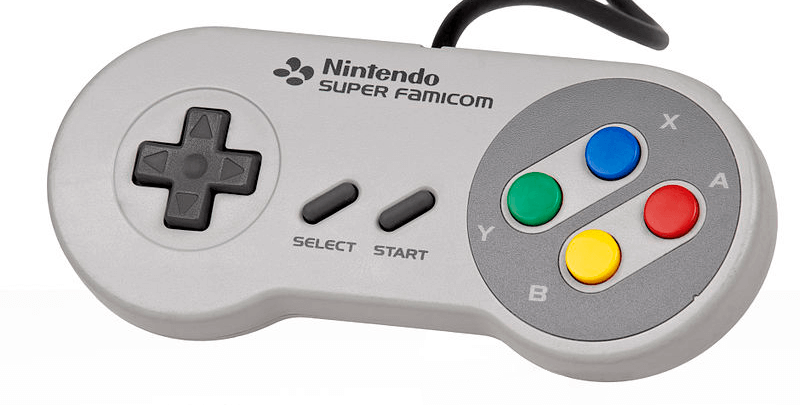
Image: Evan Amos
It's shoulder bumpers helped introduce the idea that not every button had to do something important, and opened up new options for the way we interacted with games that traditionally only let us press "A" or "B". Its colored buttons looked great (especially on the JP/PAL version, pictured, which copies the colors of the Super Famicom logo). And its soft, rounded corners created a timeless look that was a lot easier on gamer's wrists and fingers than the NES controller.

Image: Evan Amos
If the modern console controller had a family tree, its roots would be planted firmly on Sega's final home console. From its bulky design to its thumbstick on the left, the Dreamcast's controller laid out---as it did with so many other things---the foundations for Microsoft's entry into the console space, and while its VMU gimmick never took off elsewhere, it was a fun and well-used novelty for the Dreamcast.
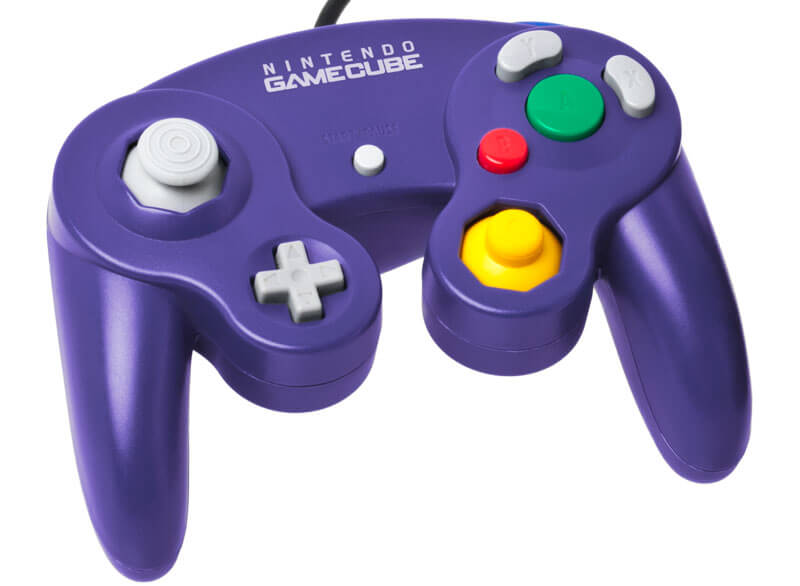
Image: Evan Amos
Not only was the GameCube controller unbreakable, but it had two very cool features that were well-used by a lot of games on the platform. The first was a "guide" around the thumbsticks which let you lock them into certain directions. The second was a peculiar button layout that actually made sense the more you used it, creating a GIANT GREEN BUTTON out of the one you used the most, and relegating other buttons to smaller sizes (and less striking colors) the less frequently they were required.
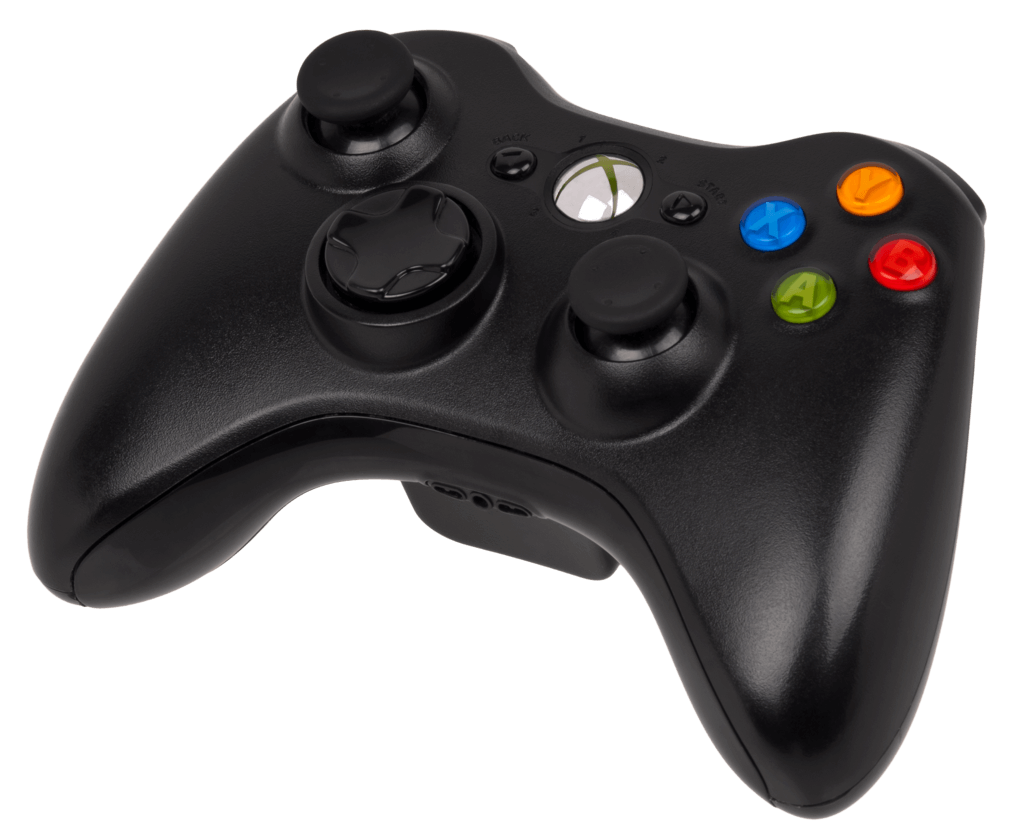
Image: Evan Amos
There's little about the Xbox 360's controller that was new. Carrying on from the Dreamcast's lineage through to the S controller on the original Xbox, its stick and button layout was already very familiar to gamers.
But it just...perfected it. It perfected almost everything about video game controller design. The Xbox 360 controller was so good that not only did it work flawlessly for Xbox 360 games, but its compatibility with the PC did something that no other peripheral manufacturer had ever been able to do on the platform: usher in an era of controller universality. This consistency allowed console games to be ported to (and played properly on) the PC with a minimum of fuss, a small but vital contributor to the success of Steam (and action games in general) on the PC today.
Even the Xbox One controller, debuting nearly a decade later, is basically the same deckchairs, rearranged only slightly (and some will argue, like with the bumpers, not as well).
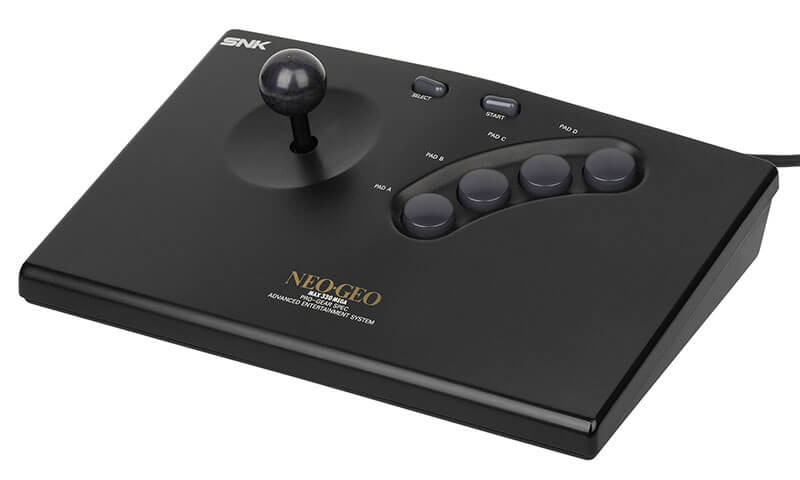
Image: Evan Amos
The Neo Geo brought arcade games into the living room. And the Neo Geo's arcade stick brought arcade controls with them. While companies like Mad Catz have made a living catering to hardcore arcade gamers with third-party sticks, no first-party stick has ever come close to matching the sleek design, feel and durability of SNK's official offering.
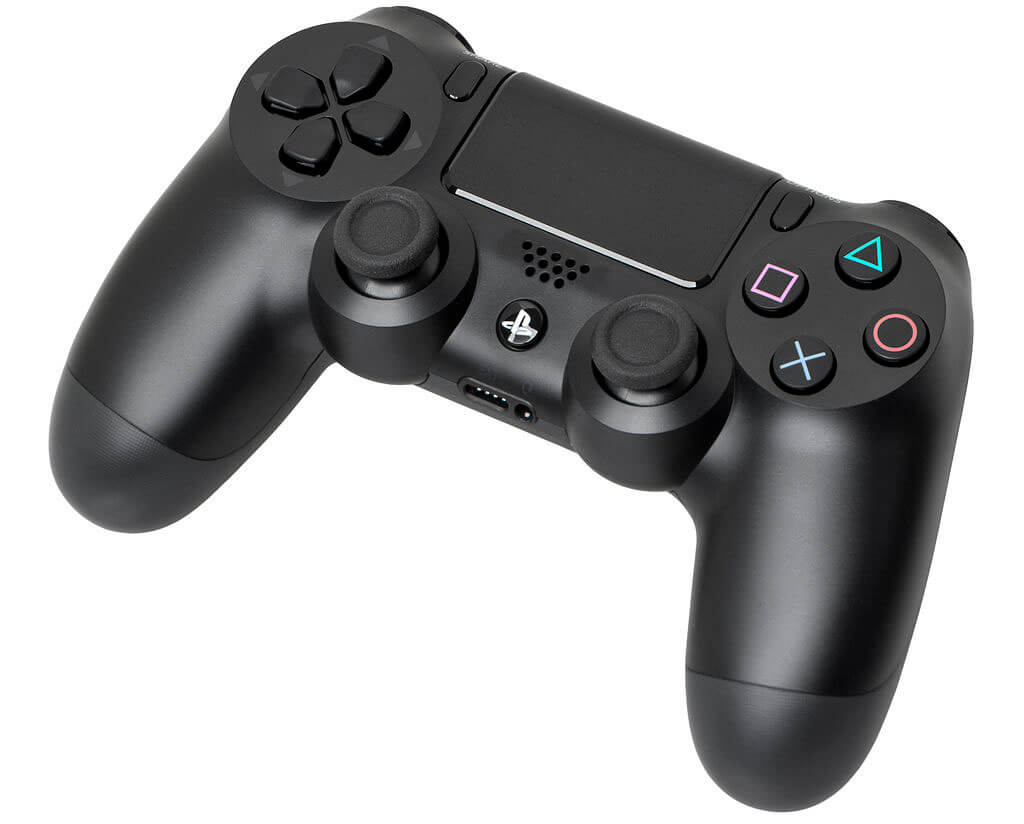
Image: Evan Amos
It may seem premature to add a controller from the current generation to this list, but I think the DualShock 4 deserves a spot here. Partly because it solved a decades-long design flaw with the line's design, finally creating a PlayStation pad that's truly comfortable in the hands, but mostly because of that "SHARE" button, which we don't need the gift of hindsight to realize is a game-changer.
The sharing of our screenshots and clips isn't some passing fad, it's a cornerstone of video game culture and communities. To be able to do that on a console with the press of a button is just the best.
A few shout-outs here at the end to controllers that didn't quite make it: the Wavebird (maybe my personal fave, though its lack of rumble for Animal Crossing fishing was a disaster), the Xbox Elite (my "daily driver" on PC) and...the Wii Remote. Not as a motion-sensing device, but as a standard controller (those buttons and d-pad were amazing).
Image credit: Super Nintendo masthead image by Daniel
 Can Uber become a 'just' workplace? CEO Travis Kalanick lays out the plan
Can Uber become a 'just' workplace? CEO Travis Kalanick lays out the plan
 Nike's Eliud Kipchoge came very close to running a mythical sub
Nike's Eliud Kipchoge came very close to running a mythical sub
 Pamela Anderson really, really wants you, and the rest of the world, to become a vegan
Pamela Anderson really, really wants you, and the rest of the world, to become a vegan
 These temporary tattoos are helping people living with mental health issues
These temporary tattoos are helping people living with mental health issues
 Dude takes a pic with Paul Ryan, promptly enters the trolling hall of fame
Dude takes a pic with Paul Ryan, promptly enters the trolling hall of fame
 Jay Cutler, quarterback and meme god, just got burned by a savage retirement subtweet
Jay Cutler, quarterback and meme god, just got burned by a savage retirement subtweet
 Fritz vs. Monfils 2025 livestream: Watch Australian Open for free
Fritz vs. Monfils 2025 livestream: Watch Australian Open for free
 Jay Cutler, quarterback and meme god, just got burned by a savage retirement subtweet
Jay Cutler, quarterback and meme god, just got burned by a savage retirement subtweet
 Shop the Owala FreeSip on sale during Amazon's Big Spring Sale
Shop the Owala FreeSip on sale during Amazon's Big Spring Sale
 Jay Leno spends his weekends cruising around in a vintage fire truck
Jay Leno spends his weekends cruising around in a vintage fire truck
 Bill Clinton is co
Bill Clinton is co
 Marginalised people are at greater risk of being victims of revenge porn, says study
Marginalised people are at greater risk of being victims of revenge porn, says study
 Chris Pine reminds us he’s not Hemsworth, Evans, or Pratt in 'SNL' monologue
Chris Pine reminds us he’s not Hemsworth, Evans, or Pratt in 'SNL' monologue
 Uber's big rig trucks are here and geared for a long road ahead
Uber's big rig trucks are here and geared for a long road ahead
 Pamela Anderson really, really wants you, and the rest of the world, to become a vegan
Pamela Anderson really, really wants you, and the rest of the world, to become a vegan
 Apple's newest ad makes a haunting plea to take climate change seriously
Apple's newest ad makes a haunting plea to take climate change seriously
 Can Uber become a 'just' workplace? CEO Travis Kalanick lays out the plan
Can Uber become a 'just' workplace? CEO Travis Kalanick lays out the plan
Holly is Fat Bear Week's fattest bearHow to connect AirPods to ChromebookHow to put iPhone in recovery modeEddie Wu continues to lead Alibaba’s Cloud division in the recent adjustment · TechNodeThe 2019 fat bear week champion is in a league of her ownThese 20 incredibly detailed, microscope photographs are quite the closeGet the iPad 10th Generation for $349EV maker backed by Huawei, CATL, and Changan launches first electric sedan · TechNodeMost dominant shark of the deep sea tagged at depth for the first timeAlibaba Cloud suffers second outage in a year, causing major apps to crash · TechNodeGoogle is bankrolling climate deniers, report reveals. Here's the 3 most problematic ways.Apple Pencil Pro handsHow to connect AirPods to ChromebookHow to set up Siri on your iPhoneGet the iPad 10th Generation for $349Audi to use ironBest Amazon Pet Day deal: Score up to 38% off a pet DNA kit for your dog or catApple iPad Pro preorder deal: Save $50 with My Best Buy Plus or TotalWPS apologizes for seeming to let private documents be used for AI training · TechNodeAudi to use iron Staff Picks: Fathers, Fleabag, and the French Toast of Agony by The Paris Review A Graphic Novel before the Term Existed by James Sturm The Creative Compulsions of OCD by Adam O’Fallon Price Redux: In Memoriam, Susannah Hunnewell by The Paris Review The Silhouette Artist by Amy Jo Burns After Stonewall by The Paris Review Staff Picks: From Aphorisms to Zorn by The Paris Review Sigrid Nunez’s Portraits of Animal Intelligence by Peter Cameron Fra Angelico’s Divine Emotion by Cody Delistraty Summer is Made of the Memory of Summer by Nina MacLaughlin García Márquez’s Five Favorite Cocktail Stories by Santiago Mutis Durán The Many Lives of Lafcadio Hearn by Andrei Codrescu I Am the Mother of This Eggshell by Sabrina Orah Mark The Domestic Disappointments of Natalia Ginzburg by Dustin Illingworth Unmapped by Sarah M. Broom James Alan McPherson’s Powerful, Strangely Frightening Stories by Edward P. Jones How Stanley Kubrick Staged the Moon Landing by Rich Cohen Redux: Sulfurous Coils of Red and Green by The Paris Review Dark Thread: An Interview with Kimberly King Parsons by Lauren Kane What’s Up with Ancient Greek Epitaphs by Anthony Madrid
2.5566s , 10162.9453125 kb
Copyright © 2025 Powered by 【Blue Night (2024) Hindi Web Series】,Exquisite Information Network